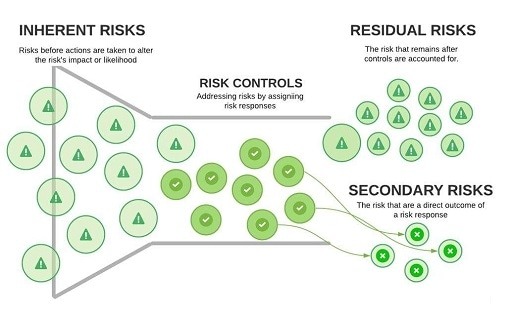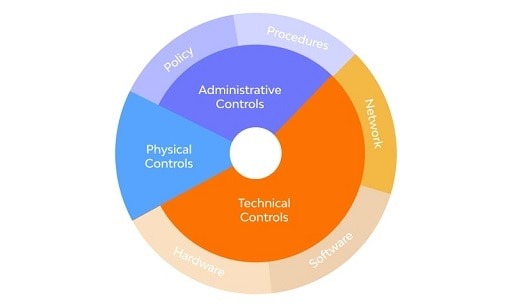Applications delivered via a cloud-computing model known as software as a service (SaaS) are becoming increasingly important to many businesses.
Software that runs on the web has brought about significant improvements in the manner in which businesses run their operations and provide services in a variety of departments, including education, information technology, finance, the media, and healthcare.
Cybercriminals are constantly looking for new and inventive ways to attack the vulnerabilities that are present in web applications.
Although the reasons behind their actions may vary, including but not limited to financial gain, personal animosity, or some political agenda, each of these individuals poses a significant threat to the organization that you run. So, what kinds of security vulnerabilities could potentially exist in online apps? How exactly do you recognize them?

SQL Injections
An SQL injection is a common form of attack that involves the execution of potentially harmful SQL statements or queries on the SQL database server that is operating in the background of a web application.
Attackers have the potential to circumvent security configurations such as authentication and authorization to gain access to the SQL database that stores sensitive data records for a variety of different companies if they exploit SQL vulnerabilities and use those vulnerabilities to their advantage.
Once the attacker has gained this access, they are able to manipulate the data by adding new entries, updating existing ones, or removing records entirely.
It is essential to perform input validation and make use of parametrized queries or prepared statements in the application code if you want to protect your database from being compromised by SQL injection attacks.
In this manner, the input from the user is appropriately sanitized, and any potentially malicious elements are eliminated.
XSS
XSS, which stands for “cross-site scripting,” is a flaw in the security of the internet that makes it possible for an adversary to insert harmful code into a reputable website or application. This occurs when a web application fails to check user input in an appropriate manner before making use of it.
After successfully injecting and running the malware, the attacker is in a position to assume control of the interactions that a victim has with the software.
Errors in the Security Configuration
Incorrect security configuration refers to the application of security settings that in some manner lead to problems or is otherwise problematic. Because a configuration was not correctly configured, this leaves security vulnerabilities in the program.
These security gaps allow attackers to steal information or launch a cyberattack to achieve their motivations, such as preventing the app from running and incurring massive (and costly) downtime.
The use of weak passwords, transferring data without encryption, and exposed ports are all examples of insecure security configurations.
Regulation of Access
Access controls are an essential component in providing protection for applications from third parties that are not permitted and do not have the authority to access essential data. If the access controls are hacked in any way, this may make it possible for the data to be stolen.
An authentication flaw that has been exploited makes it possible for malicious actors to get unauthorized access to data by stealing passwords, keys, tokens, or other sensitive information belonging to an authorized user.
You should adopt the use of Multi-Factor Authentication (MFA) as well as generate strong passwords and maintain them secure. This will allow you to prevent the situation described above.
An error in the cryptographic system
A breach in cryptography may be to blame for the exposing of sensitive data, which grants access to an entity that normally wouldn’t be able to see it. This occurs either because of a flawed implementation of an encryption technique or because there is no encryption in place at all.
It is essential to classify the information that is handled by, stored by, and transmitted by a web application in order to prevent cryptographic errors. You will be able to ensure the safety of sensitive data assets by using encryption both when the assets are not being used and when they are being transferred if you first designate the assets as being sensitive.
Make an investment in a reliable encryption solution that makes use of modern and powerful algorithms, enables centralized encryption and key management, and handles all aspects of the key lifecycle by itself.
How to find web vulnerabilities?
There are primarily two approaches that may be taken when testing the web security of an application. We strongly advise utilizing both approaches concurrently in order to maximize the effectiveness of your cybersecurity.
-
Web Scanning Tools
Scanners for vulnerabilities are tools that automatically identify potential flaws in web applications and the infrastructure that supports them. These scanners are helpful due to the fact that they have the capability of discovering a variety of issues, and they can be run at any time, which makes them a valuable addition to a regular security testing routine during the process of developing software.
There are a variety of tools available for detecting SQL injection (SQLi) attacks, some of which are open-source and can be located on GitHub. Some of these tools are described below. Tools such as NetSpark, SQLMAP, and Burp Suite are examples of some of the most popular options for searching for SQLi.
In addition to that, Invicti, Acunetix, Veracode, and Checkmarx are all potent tools that can conduct a full scan of a website or application in order to identify potential security flaws such as cross-site scripting (XSS). When you use these, it will be simple and quick for you to uncover any obvious flaws.
Another powerful scanner, Netsparker provides OWASP Top 10 protection, database security auditing, and asset discovery in addition to its other useful features. Using Qualys Web Application Scanner, you can look for security misconfigurations that could potentially pose a threat to your website.
It goes without saying that there are many web scanners that can assist you in locating problems in web applications; all that you need to do is research various web scanners to get a better idea of which one is the most appropriate for both you and your business.
-
Examining the Level of Penetration
The usage of penetration testing is yet another way that may be used to locate vulnerabilities in web applications. The security of a computer system is evaluated through the use of a test that simulates an attack on the system.
When conducting a pentest, security professionals employ the same techniques and tools that hackers do in order to locate vulnerabilities and illustrate their potential impact.
Penetration testing allows you to determine whether or not the efforts made to eliminate security flaws in web applications were successful. Web applications are designed with the goal of removing security vulnerabilities.
An organization can better satisfy regulatory standards such as PCI DSS, HIPAA, and GDPR by doing penetration testing, which also helps paint a picture of the existing security posture for management so that they can spend the budget where it is needed.
Do regular web application scanning to keep you safe.
It is a smart move for a business to make security testing a routine component of its cybersecurity strategy and to do it on a consistent basis.
Back in the day, security audits were carried out only once a year or once every three months, and they were almost always carried out as stand-alone penetration tests. Testing for cybersecurity is now routinely incorporated into operations at a significant number of companies.
When developing an application, it is important to do routine security checks and cultivate solid preventative measures.
This will help to ward off potential cyber attackers. If you follow sound security procedures, you won’t just see benefits in the short term but also ensure that you won’t have to constantly worry about threats.
Would you like to read more about the most dangerous web application vulnerabilities-related articles? If so, we invite you to take a look at our other tech topics before you leave!










